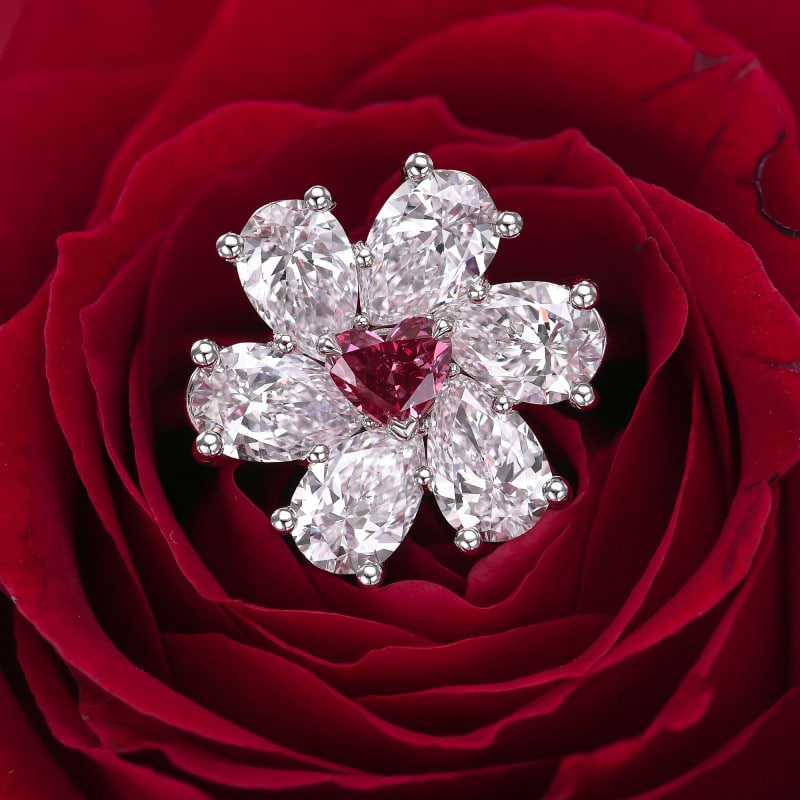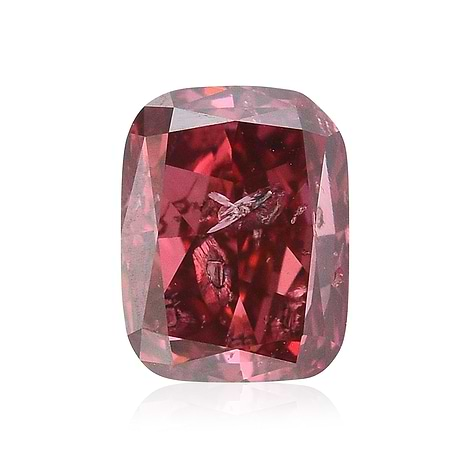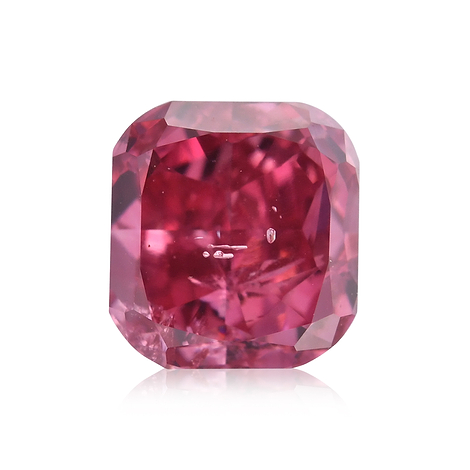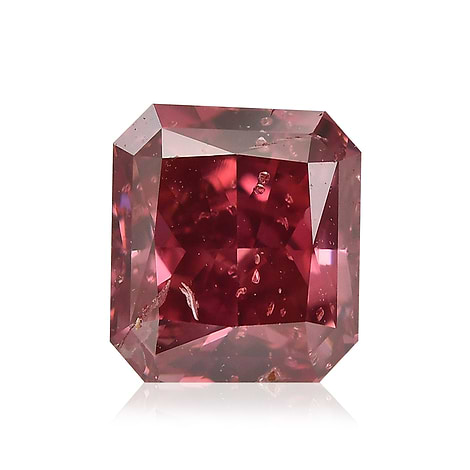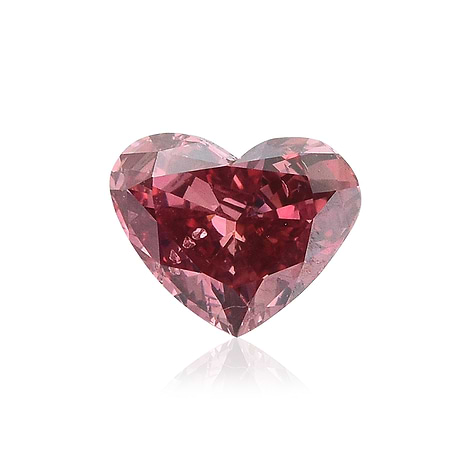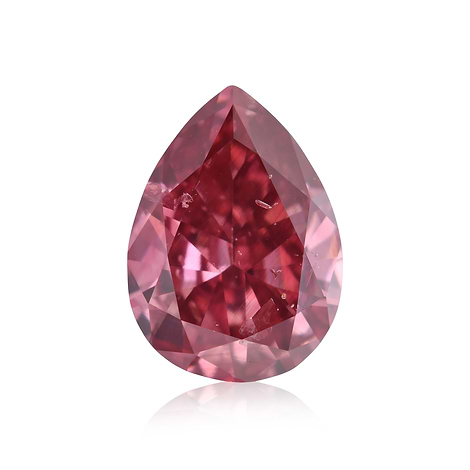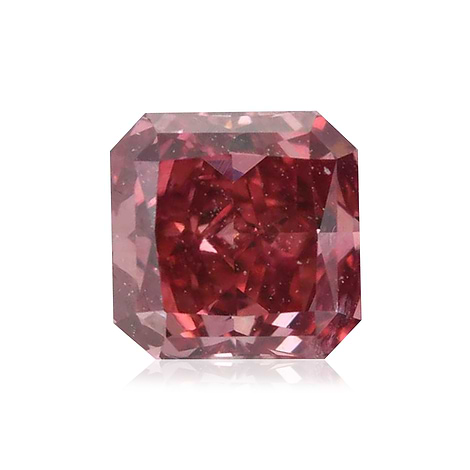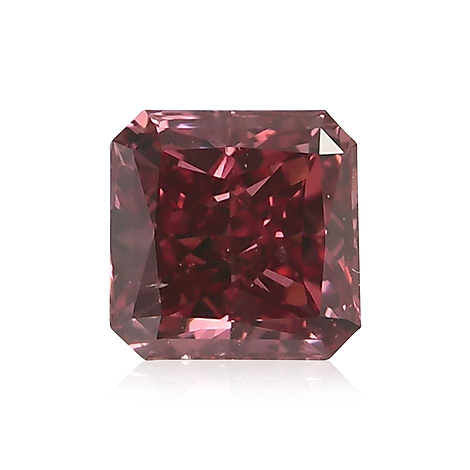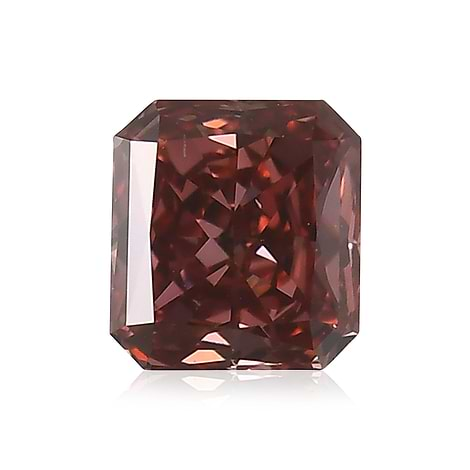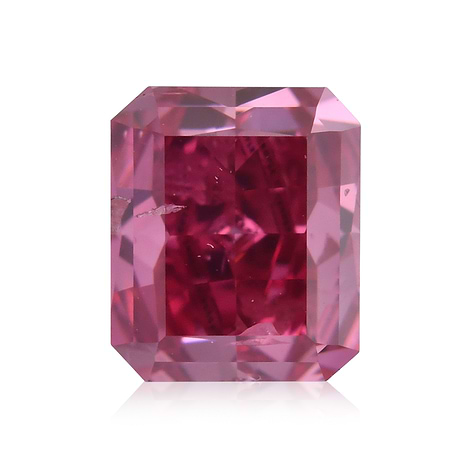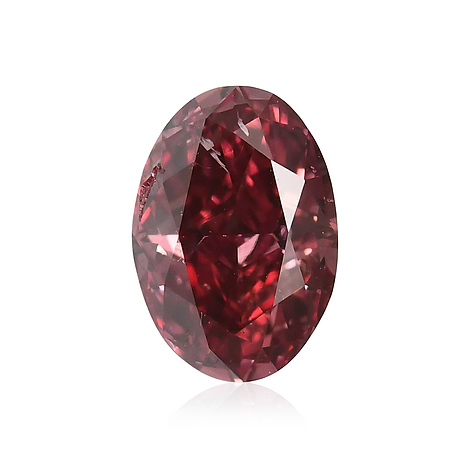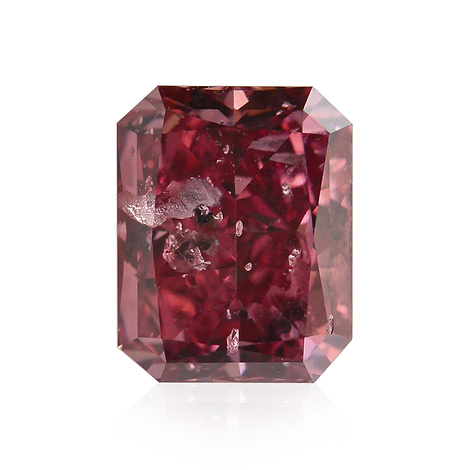Red diamonds are the rarest among all colored diamonds. These exquisite gems are unique and incredibly rare due to their unique formation process. These diamonds are primarily found in mines in Brazil, Africa, and Australia. Due to their scarcity, red diamond value is exceptionally high, making them some of the most sought-after gemstones in the world.
What causes the color
Fancy color diamonds are found in twelve different colors, but with over 230 color combinations and in various locations around the globe. The majority of Red diamonds, in particular, originate from Australia, in the Argyle diamond mine, which is known for its production of some of the world’s finest Pink, Violet, Blue, and Brown diamonds. However, a large percentage of these diamonds have also been found in Brazil, Russia, and India.
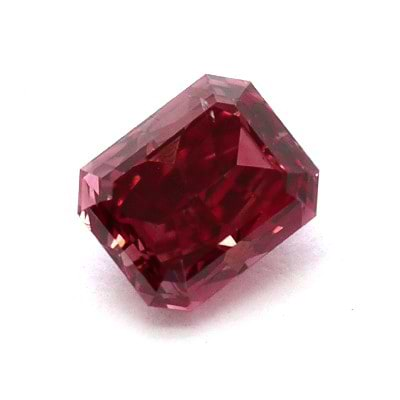
Fancy Red diamonds are among the rarest colors in the fancy-colored diamond family.
Red Diamonds vs. Color Diamonds
The common denominator among all color diamonds is that they all possess a color, in contrast to colorless diamonds, which lack color.
However, other than this aspect, every color diamond has its own characteristics as it owes its unique color to separate causes.
Additionally, as a result of each and every color diamond’s rarity, each color category has a different value. Color diamonds that are more abundant are generally also found in larger sizes, whereas very rare diamonds are usually on the smaller side when discovered.
Like many other color diamonds, Fancy Red diamonds can be found in one pure color or with secondary hues, which include Purplish, Brownish, and Orangy. While other colors come in several intensity levels, they come in one intensity level alone: Fancy Red.
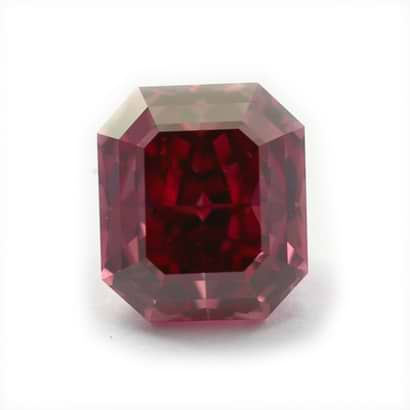
Fancy Purplish Red Asscher-cut diamond.
Although it contains a secondary hue, this stone still remains extremely rare.
Cause of the Red Color
Various impurities and elements cause color in diamonds. Red diamonds are similar to Pink diamonds in terms of the cause of the color. It is not completely clear what the cause is, but it is believed that deformities in the crystal lattice create the pink color and, in this case, the red hue. A very intense level of this deformity results in the bright red color.
 LEIBISH Collected of Natural Fancy Red Diamonds
LEIBISH Collected of Natural Fancy Red Diamonds
Although pure red diamonds are almost impossible to come by, those with a secondary hue, such as Brownish Red or Purplish Red, are somewhat more attainable. There are also diamonds that appear to be pure red, but are actually fancy deep or fancy dark pinks. Only a handful of what are considered red diamonds are pure natural red. Due to the rarity of these stones, their prices are often quite high.
Because these diamonds are so rare, there is little known about them. The information we do have includes the main cause for the stone’s red color, which is the crystal lattice defects showing stress lamination during the diamond’s formation. If you are wondering what a red diamond looks like, a true, pure one does not resemble a ruby, a garnet, or any other red gemstone in terms of color; its coloring is slightly gentler.
Characteristics of Red Diamonds
Red Diamond Shape
The shape can greatly influence its appearance and value. Common shapes include round, princess, and pear, with each cut aiming to enhance the diamond’s natural color and brilliance. The choice of shape can affect how light interacts with the diamond, emphasizing its unique red hue.
Red Diamond Clarity
Clarity refers to the presence of inclusions and blemishes. While clarity is an important factor in determining the diamond's quality, the intense red color can sometimes mask minor inclusions, making them less noticeable.
Red Diamond Fluorescence
Fluorescence in diamonds is the effect of ultraviolet light, causing the diamond to emit visible light. For red diamonds, fluorescence is typically minimal or non-existent, which helps maintain their pure color under different lighting conditions.
Red Diamond Tone
The tone refers to the lightness or darkness of its color. Red stones can range from light to dark tones, with darker tones often being more desirable and valuable. The tone is a critical aspect that affects the overall visual impact of the diamond.
Red Diamond Secondary Hues
Secondary hues refer to additional colors that may be present alongside the primary red hue. These can include shades of purple, pink, or brown. The presence of secondary hues can influence the diamond's value and appeal, with pure red diamonds being extremely rare and highly prized.
Red Diamond Intensity
Intensity describes the strength of the red color, ranging from faint to vivid. The intensity of the color is one of the most important factors in determining the value of a red stone. Diamonds with higher intensity levels are rarer and thus more valuable.
Famous Red Diamonds
Like every color diamond category, there are famous Red diamonds too. These include The Moussaieff Red, a 5.11-carat Fancy Red diamond with an IF clarity grade. Known as the largest internally flawless red diamond in the world, this stone is one of the most magnificent stones in existence, and The Hancock Red Diamond, a 0.95-carat Fancy Purplish Red, Round Brilliant Diamond. Though the latter diamond is less than a carat in size, it is still among the most famous Red stones of all time due to its fabulous color.
Just to put some perspective on the value of these top-quality red diamonds, here are the prices at which these remarkable stones were sold at auction. The Moussaieff Red sold for nearly $8 million back in 2001, placing its value at $1.6 million per carat. The Hancock Red, in contrast, was sold in 1987 for approximately $880,000. That is $926,000 per carat, but today such a diamond would fetch far more.
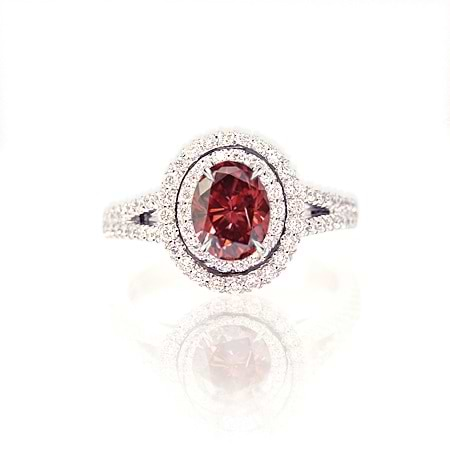
0.80 carat Fancy Red Double Halo Diamond Ring
At LEIBISH, we have been selling Argyle pink diamonds for about 20 years. LEIBISH was among the first Internet portals (maybe in the world) to sell Argyle pink diamonds to end-users.
Argyle has produced diamonds of amazing colors. However, as the mine closed by 2020, there were only a few years left to create magic. Upon finding the Argyle Everglow, Robyn Ellison, who is the communications manager for Rio Tinto, said, "It is unlikely that a diamond as rare as this will come out of the mine again."
The company has sold nearly 100 natural red diamonds over the past 10 years. During that time, my son Shmulik, the company's GIA GG gemologist, participated in the Argyle Tender every year. It is a cruel exercise as Argyle invites over 100 of the world’s top dealers to bid blindly upon an exclusive collection of 50-60 diamonds. Shmulik usually bids a lot for the stones he wants. Some years, we win more, while others, we win less. Every year offers different results.
I recall Shmulik’s reaction when he was told he had 17 stones in the Argyle Pink Diamond Tender 2012, understanding that 17 tender stones were 25% of all stones offered at that year’s Tender.
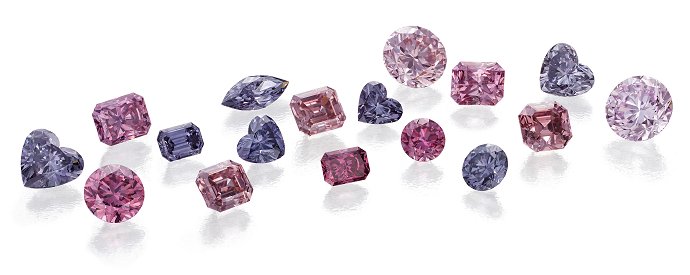
The 17 Argyle Tender diamonds LEIBISH won in 2012
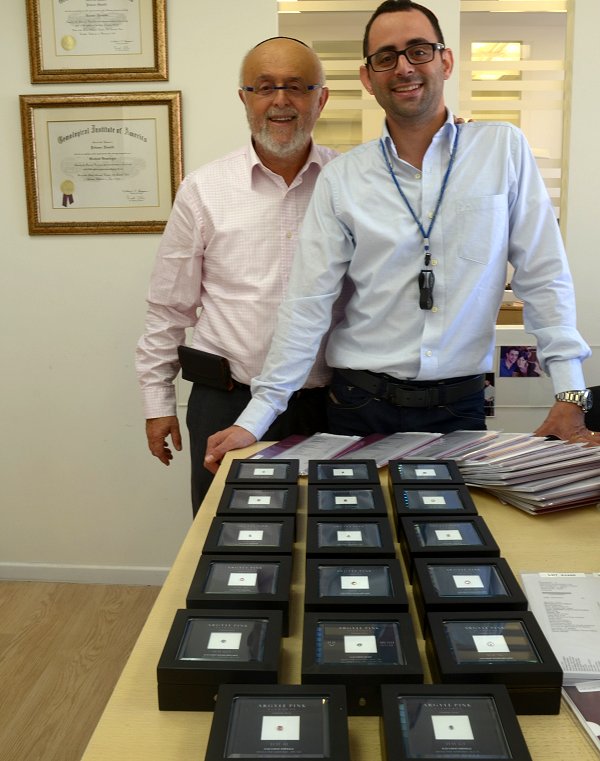 In 2012, Shmulik won 17 Argyle Tender Diamonds
In 2012, Shmulik won 17 Argyle Tender Diamonds
Red Diamond History
The Value of a Red Diamond
As mentioned earlier, the Red diamond is a rare specimen. This results in high prices. As time goes by, the awareness of color diamonds in general and color diamonds as wise investments specifically is increasing greatly, which translates into a high demand for these beautiful natural gemstones. It is unclear how much remains from the Red diamond sources that are accounted for; therefore, the value of red stones is constantly rising. The figures are high, but whatever the numbers are presently, they will grow significantly in the near future.Browse through our wide selection of Natural Fancy Red Diamonds.
